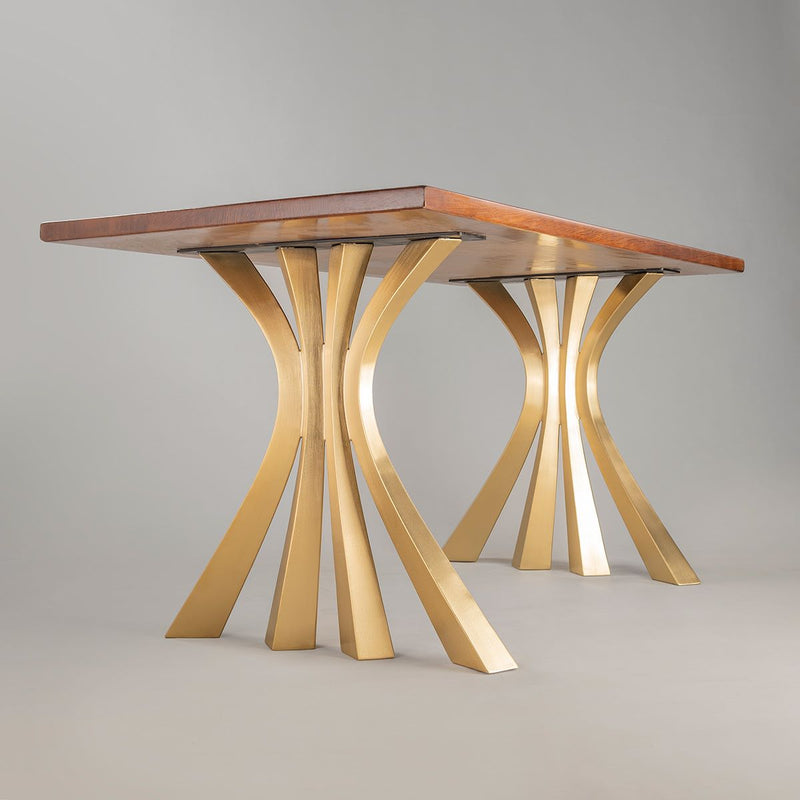The Ultimate Guide to Picking Durable Dining Room Table Legs
The Ultimate Guide to Picking Durable Dining Room Table Legs
Blog Article
Choosing the Perfect Table: What Styles Job Best for Your Home?
Choosing the perfect eating table for your home can be a nuanced procedure that balances looks and capability. To browse these selections successfully and discover a table that absolutely complements your home, think about the following elements in information.
Assessing Your Room
Examining the measurements and format of your eating location is a vital primary step in picking the perfect dining table. Begin by gauging the size and width of the room, accounting for doorways, windows, and various other architectural features that might influence table positioning. This makes certain that your table not only fits but likewise permits for comfy motion around it.
Think about the variety of people you usually delight. A table ought to accommodate your house's day-to-day needs while using sufficient adaptability for periodic guests. As a policy of thumb, designate a minimum of 24 inches of table width each to make sure a comfy dining experience.
It's also necessary to preserve appropriate clearance around the table. Preferably, there must be at the very least 36 inches in between the table edge and walls or other furnishings, making it possible for easy access and activity. For rooms where chairs with arms or additional storage space devices like buffets are entailed, increasing this clearance to 48 inches is a good idea.
Lights and atmosphere play considerable functions as well. Make sure that your dining table straightens with existing illumination fixtures or prepare for appropriate lighting options. This thorough spatial assessment guarantees that your eating table not only fits literally but likewise harmonizes with your area's total capability and visual.
Popular Table Styles

Conventional table frequently include ornate information, rounded legs, and rich timber coatings, evoking a sense of timeless sophistication. They are ideal for homes with traditional decoration or those wanting to include a touch of class to their eating area.
Modern eating tables focus on simplicity and tidy lines, commonly including materials like glass and metal. These tables are optimal for modern spaces, supplying a streamlined and minimalist look that complements minimalist style viewpoints.
Rustic table, on the various other hand, highlight all-natural materials and a handcrafted appearance - dining room table legs. They typically feature recovered timber and a distressed coating, producing a cozy and welcoming atmosphere. These tables function well in farmhouse-style homes or those seeking a relaxing, natural feel
Industrial dining tables incorporate resources such as metal and timber, often showcasing an utilitarian aesthetic. This style is fit for lofts or city spaces, adding a touch of rugged charm and sturdiness to the dining experience.
Each design supplies distinctive benefits, making it necessary to pick one that straightens with your home's total design and your personal choices.
Product Choices
When choosing an eating table, the option of material plays a Bonuses vital role in identifying both the table's visual appeals and capability. Timber, metal, glass, and composite products each offer unique advantages and challenges, making it essential to align the product with your home's decoration and lifestyle demands.
Wood is an ageless and versatile choice, readily available in selections such as oak, walnut, and mahogany. Understood for its longevity and heat, wood enhances both typical and contemporary interiors. Nonetheless, it calls More Help for routine upkeep to avoid scratches and bending.
Metal tables, frequently crafted from stainless-steel, aluminum, or wrought iron, are praised for their contemporary charm and toughness. They are especially fit for commercial or minimal setups but can be vulnerable to damages and might really feel cold to the touch.
Glass dining tables bring an air of elegance and openness, perfect for smaller areas as they develop an impression of more area. While simple to clean, glass can be vulnerable to smudges and calls for cautious taking care of to stay clear of chips and cracks.
Composite materials, such as MDF and plywood, offer affordable and adjustable remedies, though they might lack the durability of all-natural materials. Choosing the ideal material guarantees your dining table is both a functional possession and a visual joy.
Shape and Size Considerations
After identifying the suitable material for your dining table, the next factor to consider is selecting the ideal form and dimension to suit your space. On the other hand, rounded tables foster a sense of intimacy and are excellent for smaller eating locations, encouraging conversation by getting rid of corners and making everybody really feel just as consisted of.
As a regulation of thumb, assign at least 24 inches of table size per individual to guarantee comfortable dining. Additionally, take into consideration the table's clearance area: there must be at the very least 36 inches between the table edge and the wall surfaces or other furniture. Expanding tables provide adaptability if you frequently organize bigger gatherings, supplying additional seating when required without inhabiting added room daily.
Matching Your Design
Picking an eating table that balances with your existing style is essential in creating a cohesive and inviting area. A smooth, minimalist table with tidy lines is ideal for a modern home, while a vintage, elaborate table matches a much more typical setup.
If your decor includes cozy tones and natural materials, think about a wooden table to improve the natural feel. On the other hand, a glass or steel table might be much more appropriate in an area dominated by trendy shades and commercial components.
A rough-hewn, reclaimed wood table can add character to a rustic room, while a refined marble surface area can boost a find out here glamorous dining location. A well-matched dining table not just enhances aesthetic appeal however additionally improves the overall eating experience.

Conclusion
Choosing the perfect eating table demands careful factor to consider of room, style, products, form, and size. Traditional tables complement classic insides with rich wood coatings, while contemporary tables match contemporary settings through glass and steel.
Report this page